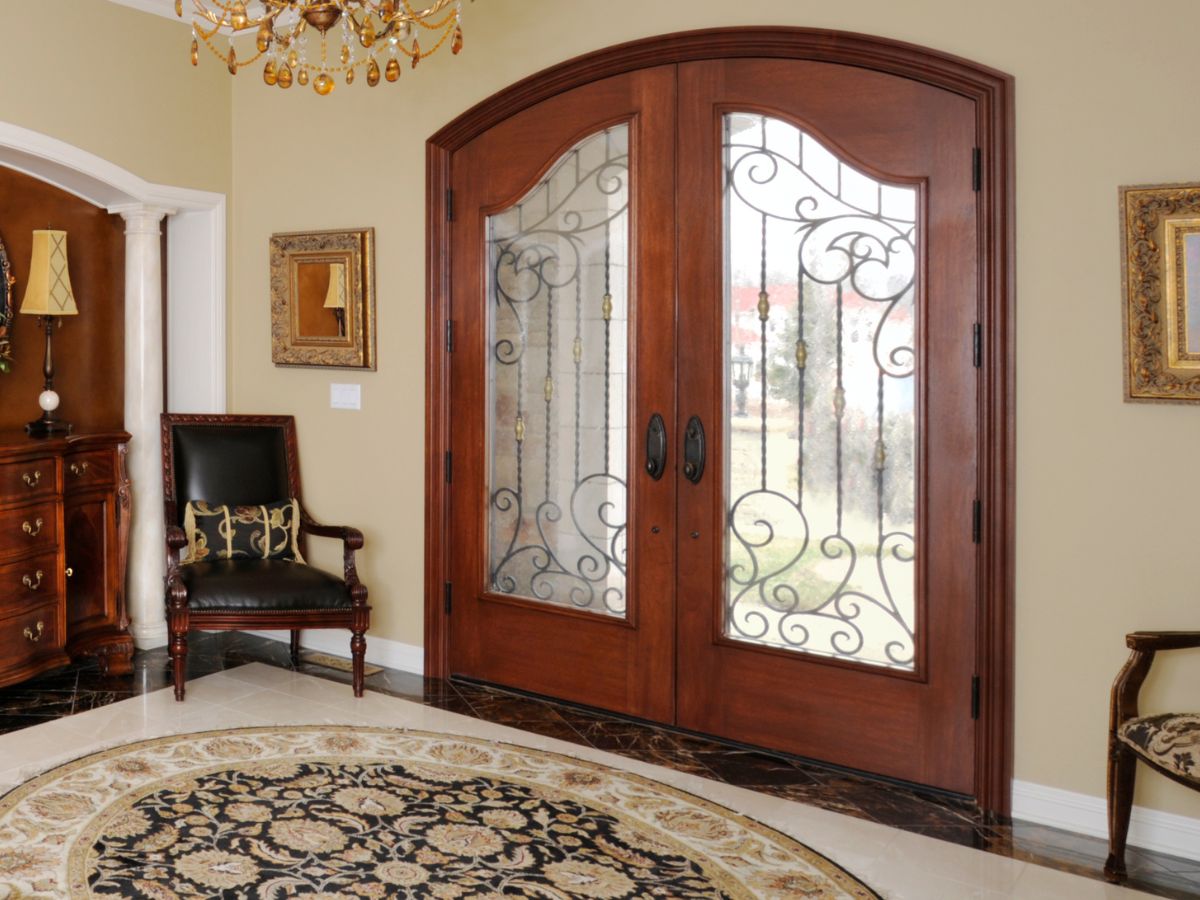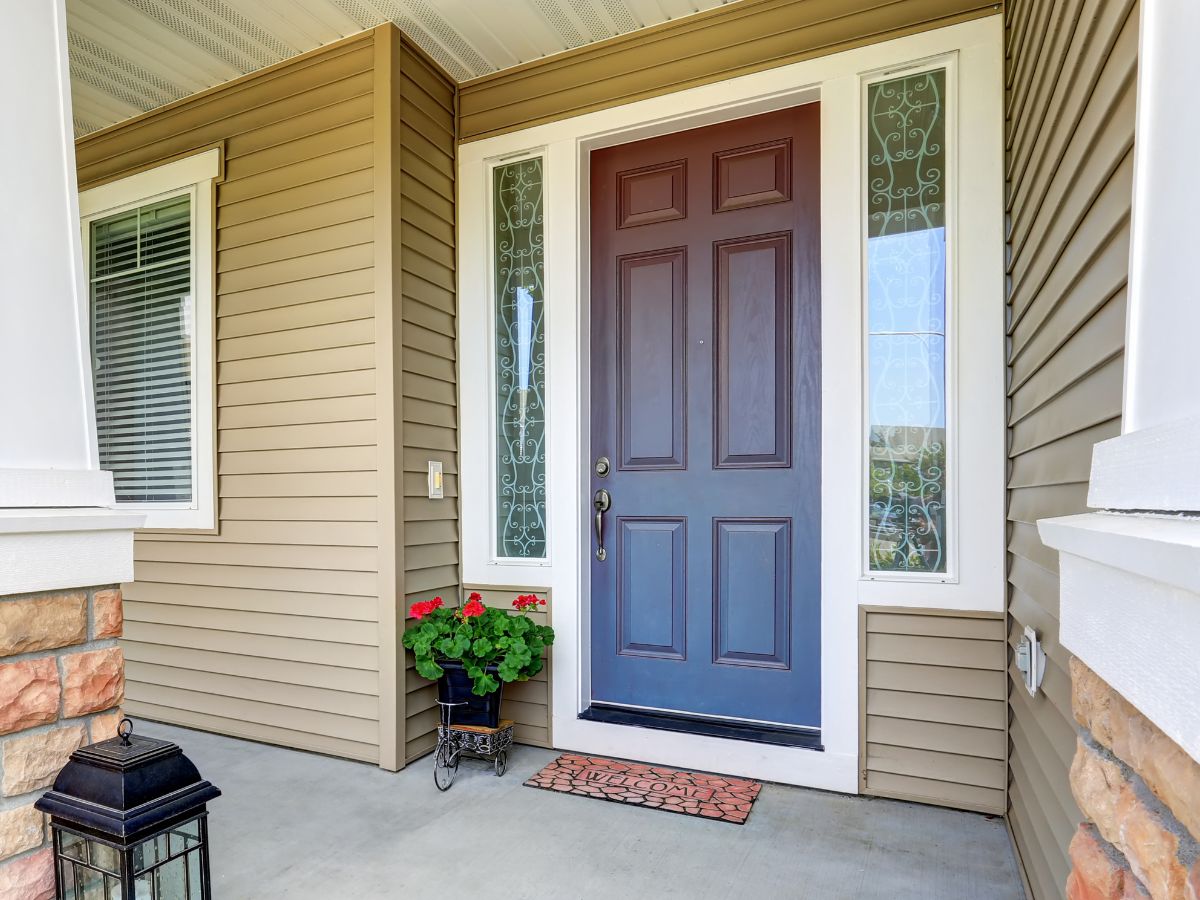Your entry door is the centerpiece of your home’s exterior. It welcomes guests, protects your family, contributes to your home’s energy efficiency, and adds substantial curb appeal. Because it plays such a vital role, choosing a new entry door requires careful thought and planning. It’s not just about finding a door that looks great — it’s about selecting a door that performs well in your specific environment, meets your security needs, complements your home’s architecture, and fits your budget.
This guide will walk you through the essential elements to consider when choosing a new front door, offering expert advice to help you make an informed decision.
Match the Style of Your Home
One of the most important things to consider when selecting an entry door is how well it matches the architectural style of your home. A poorly matched door can clash with your home’s aesthetic, whereas a door that complements the design enhances the property’s overall appeal.
For example, if you live in a Craftsman-style home, you might choose a wood door with square or rectangular glass panes and natural finishes. Colonial homes typically suit paneled doors with sidelights and traditional symmetry. On the other hand, modern homes often benefit from sleek, minimalist designs with clean lines, steel or fiberglass materials, and large glass insets. Always take cues from your home’s design elements to ensure visual harmony between the door and the façade.
Understand the Pros and Cons of Different Materials
The material of your entry door greatly impacts its longevity, maintenance requirements, appearance, and security. Today, homeowners have several excellent choices, each offering unique advantages.
Wood is the most traditional and aesthetically pleasing material. It provides warmth and character that’s hard to replicate. Wood doors can be carved, stained, or painted to suit your preferences. However, they require regular maintenance and can be susceptible to moisture damage, warping, and insect activity.
Steel doors are durable and typically more affordable than other materials. They offer excellent security and energy efficiency but can be prone to dents and may rust if not properly treated. Steel doors often come with foam cores to improve insulation and resist weather extremes.
Fiberglass is a popular modern choice due to its versatility and resilience. These doors can mimic the look of real wood but require less maintenance. Fiberglass is also extremely resistant to wear, rot, and weather damage, making it an ideal option for homes in extreme climates.
Aluminum doors are typically custom-built and are particularly resistant to rust and corrosion. These doors are best suited for contemporary homes and work well in coastal regions due to their ability to resist salt-air damage.
Choosing the right material depends on your climate, desired maintenance level, and personal taste.
Focus on Energy Efficiency
Your entry door can have a considerable impact on your home’s energy performance. A door that’s poorly insulated can lead to drafts and higher energy bills, especially in homes where the door receives direct sun or is exposed to frequent temperature fluctuations.
Look for doors that are ENERGY STAR® certified. This designation ensures the product meets government standards for energy efficiency. Additionally, check the door’s R-value, which indicates how well it resists heat flow. A higher R-value means better insulation.
If the door includes glass panels, make sure they are double- or triple-pane with low-emissivity (Low-E) coatings. These features help block UV rays and maintain indoor temperature, reducing your heating and cooling costs over time.
Weatherstripping is another important feature. High-quality weatherstripping around the edges of the door will seal gaps and prevent air leaks, further improving energy efficiency.
Evaluate Security Features
Security should never be an afterthought when choosing a front door. A beautiful door is only valuable if it can also protect your home and your loved ones.
Start by ensuring the core of the door is solid and sturdy. Whether wood, fiberglass, or steel, a solid core door offers much better resistance to forced entry than a hollow version. Multi-point locking systems are an excellent upgrade, offering several locking points along the door frame for maximum security.
If your door includes glass, choose laminated or impact-resistant glass to deter break-ins. Reinforced frames and heavy-duty deadbolts further strengthen your entryway. Many homeowners also opt for smart lock technology, which allows keyless entry and remote access via mobile apps. These options not only enhance convenience but also allow you to monitor and control access from anywhere.
Investing in a secure front door offers peace of mind and may even qualify you for insurance discounts.
Choose a Size and Configuration That Fits Your Space
Before making a final decision, take detailed measurements of your current door and doorway. Standard entry doors are 36 inches wide and 80 inches tall, but many homes — especially custom builds — may have nonstandard dimensions.
You might also consider different configurations such as double doors, which make a dramatic statement and are ideal for wider entrances or homes with large foyers. Doors with sidelights, which are narrow vertical windows placed on one or both sides of the door, allow natural light into your entryway. Additionally, doors with transom windows — horizontal windows placed above the door — add elegance and more daylight.
Always consult a professional installer to ensure accurate measurements and avoid costly mistakes when ordering custom or pre-hung doors.

Think Carefully About Color and Finish
Color is one of the most noticeable and personal elements of an entry door. It can subtly complement your home’s exterior or serve as a bold focal point.
Traditional colors like deep reds, navy blues, and forest greens exude sophistication. Neutrals such as white, gray, and black provide a classic, versatile appearance. For homeowners who want to make a strong statement, vibrant colors like turquoise, mustard yellow, or fire-engine red offer personality and flair.
If your door is made of wood, you may prefer a natural stain that highlights the grain. Just keep in mind that some materials, especially wood, will require periodic refinishing to maintain their beauty and protection.
Be sure to consider how the door color will appear against the rest of your home’s exterior, including siding, trim, and landscaping.
Consider the Maintenance Requirements
How much time are you willing to spend maintaining your new entry door? Some materials are more forgiving than others.
Wood doors require the most upkeep. You’ll need to periodically reseal, stain, or repaint them to protect against moisture, sun damage, and wear. However, many homeowners find this effort worthwhile for the charm and character that wood provides.
Steel doors require far less maintenance but may need occasional touch-ups to address scratches or rust spots. Fiberglass doors are virtually maintenance-free and retain their finish well over time. A simple wipe-down with soap and water is usually sufficient.
Understanding these differences can help you choose a door that fits your lifestyle and long-term expectations.
Review Cost and Long-Term Value
Entry doors vary widely in cost depending on the material, design, hardware, and customization level. Steel doors are generally the most affordable, followed by fiberglass and wood. High-end wood doors with intricate carvings or glass inserts can cost several thousand dollars.
But don’t just focus on upfront cost. Consider the long-term value. A well-made door can last for decades, improve your home’s resale value, and reduce your energy bills. A quality fiberglass door, for instance, might cost more initially but save you hundreds annually in heating and cooling costs.
Additionally, doors with superior security features or smart technology can provide increased peace of mind and convenience — benefits that are difficult to quantify but invaluable in daily life.
Select Complementary Hardware and Accessories
Your door hardware is more than just a functional necessity. It adds style, enhances security, and rounds out the overall look.
When choosing handles, locks, knockers, or kickplates, look for finishes that match your home’s exterior theme. Brushed nickel, matte black, antique bronze, and polished chrome are all popular options. Don’t forget to factor in the visual impact of hinges, mail slots, and house numbers as well.
Coordinating these details will create a seamless and polished appearance that elevates your home’s curb appeal.
Hire a Professional for Installation
Even the best door will underperform if it’s installed incorrectly. Poor installation can lead to drafts, misaligned locks, water intrusion, and structural issues. That’s why it’s highly recommended to work with a professional door installer.
A trained technician ensures the door is level, plumb, and properly sealed. They will also verify that the door swings correctly, hardware is securely installed, and all warranties remain valid. Professional installation reduces stress, prevents expensive errors, and ensures your new entry door performs exactly as intended.
Conclusion
Upgrading your entry door is one of the most innovative ways to elevate your home’s curb appeal, strengthen security, and improve overall energy efficiency. With so many materials, styles, and features available, taking the time to understand what to look for ensures you’ll choose a door that adds both beauty and long-term value to your home.
Working with a trusted expert is always wise to get the best results. Top of the Trades is a leading name in Southern California for entry door installation, known for delivering exceptional workmanship and unmatched customer care. Whether you’re looking for a classic wood door or a modern, high-efficiency fiberglass model, our team will guide you from selection to installation with precision and professionalism.
Ready to transform your entryway? Call Top of the Trades at (800) 868-6130 today and confidently schedule your installation of your entry door.

